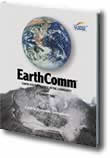Below are storylines that were designed by Cheryl Mosier, an Earth Science Teacher at Columbine High School in Littleton, Colorado.
Big Idea:
- The dynamic geosphere includes a rocky exterior upon which ecosystems and human communities developed and a partially molten interior with convection circulation that generates the magnetosphere and drives plate tectonics. It contains resources that sustain life, causes natural hazards that may threaten life, and affects all of Earth’s other geospheres.
- Natural hazards associated with Earth processes and events include drought, floods, storms, volcanic activity, earthquakes and climate change. They pose risks to humans, their property and communities. Earth science is used to study, predict, and mitigate natural hazards so that we can assess risks, plan wisely, and acclimate to the effects of natural hazards.
|
|
Activity 1 – Where are the Volcanoes? |
Activity 2 – Volcanic Landforms |
Activity 3 – Volcanic Hazards: Flows |
Activity 4 – Volcanic Hazards: Airborne Debris |
Activity 5 – Volcanoes and the Atmosphere |
Activity 6 – Volcanic History of Your Community |
Activity 7 – Monitoring Active Volcanoes |
|
Key Evidence Learned |
- how maps are made & projected |
- how topo maps are made and read |
- how lava flows, pyroclastic flows and lahars are affected by volume, temp, slope and channels |
- why ash covers a much larger area |
- gases that come from a volcano |
- how to read and interpret a geologic map |
- volcanic monitoring |
| Connection to: |
- closest volcanoes to us - patterns of volcanoes on Earth - most volcanoes are in the ocean |
- where would lava flow on a volcano - relationships between magma composition and type of volcanoe formed |
- predict movement of lahars using topo maps - hazards from each type of flow - evacuation planning and decision making |
- tephra and associated hazards - scale of eruptions from the past - ash movement is controlled by wind |
- impact of volcanoes on global climate - hazards of volcanic gases |
- examine and identify igneous rocks in <STATE> - closest volcanic rocks to Littleton |
- what signs may signal an upcoming eruption |
|
Big Idea |
- location of volcanoes and closeness to community |
- lava flow path in relation to communities |
- hazards from lava & pyroclastic flows, lahars and impact on humans |
- potential hazard of ash to our community and how it would get here |
- hazards from gases and how they impact life directly or indirectly |
- using past evidence to predict future events |
- how to mitigate damage - how to plan for evacuations and protect lives and property |
|
Real Life and Chapter Challenge |
- closest volcano to <STATE> - logical location choice for story |
- how landforms in <STATE> are interpreted on topo map - description of volcano’s appearance |
- how volcanic flows can affect communities - understanding hazards of flows and what can/cannot happen |
- ash layers in <STATE> |
- hazards from gases during and after an eruption |
- volcanoes in <STATE> |
- evacuation orders - monitoring efforts on volcano before eruption |
|
Geosphere |
- pattern of volcanism |
- how topo maps give us a picture of the world - how lava flows make types of volcanoes |
- how volcanic flows weather and erode - how volcanic flows can add layers |
- ash layers in different areas - connection of ash layers to ancient eruptions |
- rock history of <STATE> and other locations - how to interpret rock history |
- past evidence of eruptions |
|
|
Hydrosphere |
- most volcanoes are in the ocean |
- what would happen if lava flowed into the ocean |
- how lahars are formed |
- what happens when ash combines with water in the ocean and air |
- how gases can combine with water to create acid rain - theory of ocean origin |
- acidity levels |
|
|
Atmosphere |
- how magma composition creates explosive eruptions |
- how pyroclastic flows impact and interact with the air |
- how ash travels in the atmosphere |
- gases from volcanoes |
|||
|
Cryosphere |
- location of glaciers near tops of volcanoes |
- how lahars are formed |
- how ash deposits are recorded in ice |
- melting of glaciers/snow before eruptions |
|||
|
Biosphere |
- knowing locations impacts where we choose to live |
- location of forests on volcanoes |
- how volcanic flows impact life on and around a volcano |
- impact of ash on plants and animals |
- hazards of gases on life |
- how life has changed due to volcanoes |
-changes in animal patterns - dead plants/animals from gases, acidity and heat |

